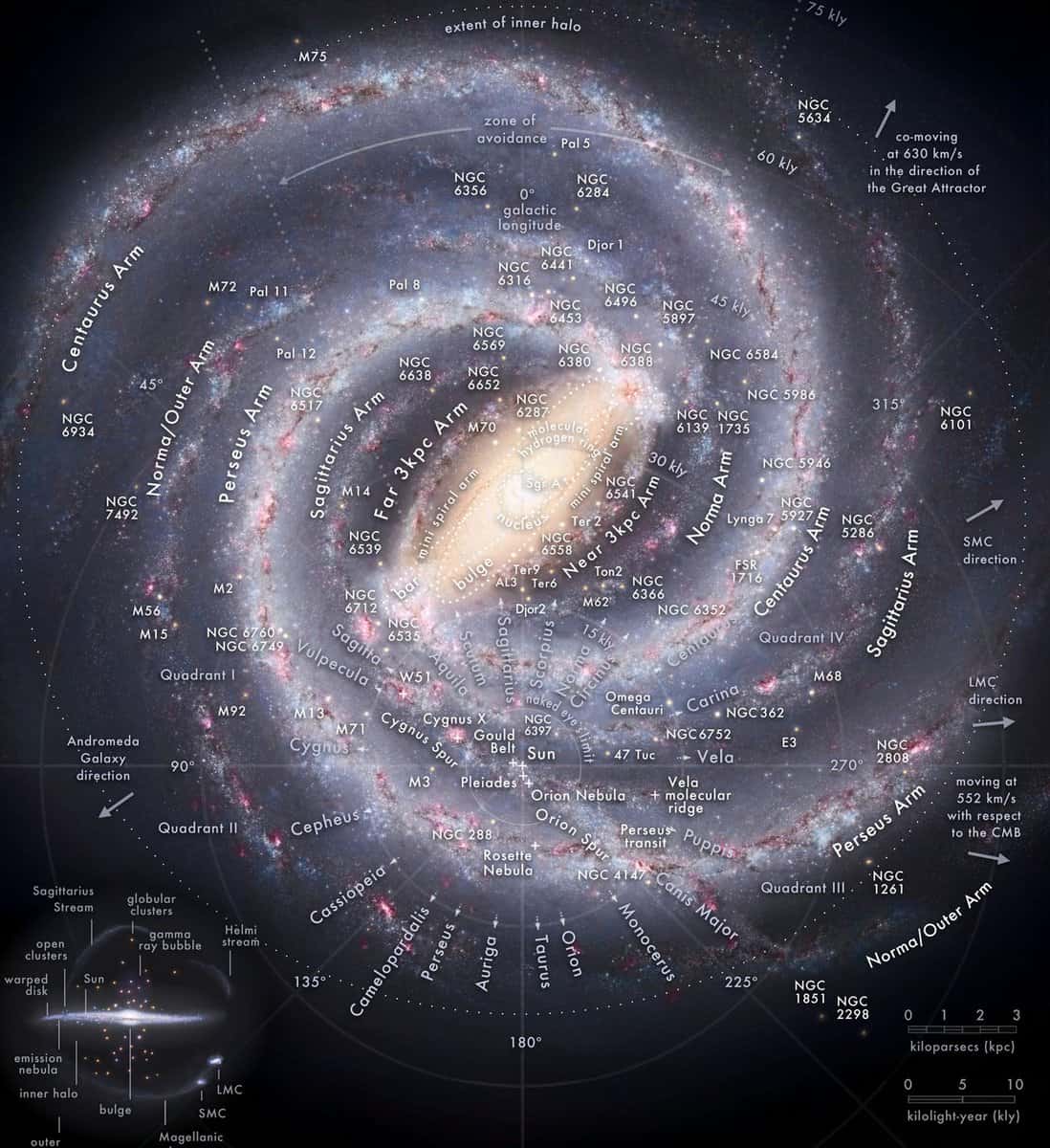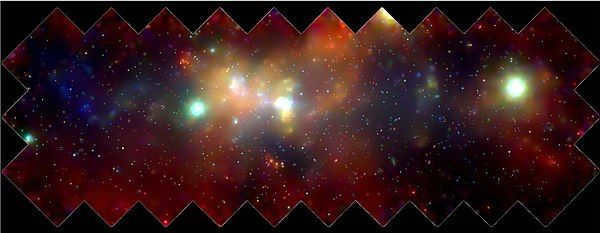
An impressive image, spanning 400 light-years by 900 light-years, has been created by combining various photographs taken by the Chandra telescope. This image showcases a multitude of celestial bodies, including white dwarfs, neutron stars, and black holes, all surrounded by clouds of intensely heated gas that reaches temperatures in the millions of degrees. At the heart of this captivating image lies the supermassive black hole, known as Sagittarius A*, which resides at the center of our galaxy. Emitting radio waves, this black hole captivates scientists and astronomers alike. The colors within the image represent different energy levels of X-rays: red for low energy, green for medium energy, and blue for high energy.
The center of our Galaxy is a relatively compact area with a radius of approximately 1000 parsecs. It stands out from the rest of the galaxy due to its unique characteristics. In a metaphorical sense, the galactic center can be seen as a scientific “lab” where the formation of stars continues to occur. Additionally, it houses the nucleus that played a crucial role in the formation of our stellar system.
The center of our galaxy, known as the galactic center, is located approximately 8.5 kiloparsecs away from our solar system. It lies in the direction of the constellation Sagittarius. Within the galactic plane, there is a significant concentration of interstellar dust. This dust causes the light emanating from the galactic center to be heavily attenuated, resulting in a 30 magnitude decrease in brightness, equivalent to a factor of 10^12. As a result of this attenuation, the galactic center is not visible to the naked eye or through optical telescopes. However, it can be observed in other ranges of the electromagnetic spectrum such as radio, infrared, X-ray, and gamma-ray. The first-ever image of the galactic nucleus was captured in the infrared spectrum in the late 1940s by A. A. Kaliniak, V. I. Krasovsky, and V. B. Nikonov [1] [2].
Structure of the galactic center
The primary element of the galactic center is the star cluster, known as the stellar bulge, which takes the shape of a rotating ellipsoid. This ellipsoid has a major semi-axis that lies within the plane of the Galaxy, and a minor semi-axis that aligns with its axis. The term “bulge” refers to the inner, luminous spheroidal component found in spiral galaxies. Its size can vary from several hundred parsecs to a few kiloparsecs. Composed mainly of aging stars, the galactic bulge follows elongated orbits.
The ratio of the semi-major axis is approximately 0.4. Stars at a distance of approximately one kiloparsec have an orbital velocity of about 270 km/s, and their orbital period is around 24 million years. Based on these measurements, it is estimated that the mass of the central cluster is about 10 billion times that of the Sun. The density of stars within the cluster increases significantly towards the center. The density of stars varies roughly in proportion to the distance from the center, with a power law exponent of -1.8. At a distance of one kiloparsec, the density is a few solar masses per cubic parsec, while at the center it is over 300 thousand solar masses per cubic parsec. For comparison, in the vicinity of the Sun, the stellar density is approximately 0.07 solar masses per cubic parsec.
Spiral gas arms emanate from the cluster and stretch outwards for a span of 3,000-4,500 parsecs. The arms revolve around the center of the galaxy while also diverging to the sides, with a radial speed of approximately 50 km/s. The amount of kinetic energy generated by this motion is 10 55 erg.
Within the cluster, there exists a gas disk with a radius of roughly 700 parsecs and a mass equivalent to one hundred million solar masses. Positioned within this disk is a central area where stars are actively forming.
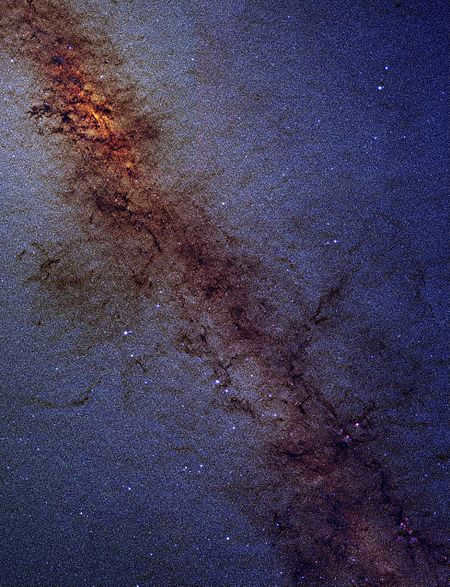
There is a ring of molecular hydrogen in the center of our galaxy that is rotating and expanding. This ring has a mass of approximately one hundred thousand solar masses and a radius of about 150 parsecs. The rotational velocity of the ring is 50 km/s and the expansion velocity is 140 km/s. The plane of rotation is inclined by 10 degrees compared to the plane of the Galaxy.
It is highly likely that the radial movements in the galactic center can be attributed to an explosion that took place there around 12 billion years ago.
The distribution of gas in the ring is not uniform, giving rise to massive gas-dust formations. The most prominent formation is the Sagittarius B2 complex, positioned 120 pc away from the center. This complex spans a diameter of 30 parsecs and possesses a mass of approximately 3 million solar masses. It stands as the largest region within our Galaxy where stars are currently forming. These clouds harbor a wide array of molecular compounds found in outer space.
Even closer to the center lies the central dust cloud, which spans a radius of around 15 parsecs. Within this cloud, periodic bursts of radiation have been observed, the origin of which remains unknown but suggests ongoing active processes.
Located right in the heart of the region is a small and concentrated origin of non-thermal radiation called Sagittarius A*. It has a radius of 0.0001 parsecs, and its brightness temperature reaches approximately 10 million degrees. The radio emissions emitted by this origin appear to be synchrotron in nature. Occasionally, there are rapid fluctuations in the intensity of the radiation. While no other sources with similar radiation have been discovered within our galaxy, analogous sources have been detected in the cores of other galaxies.
According to galaxy evolution models, the nuclei of galaxies serve as focal points for condensation and initial star formation. This is where the oldest stars are expected to reside. It appears that within the very core of the galactic nucleus lies a supermassive black hole with a mass of approximately 3.7 million times that of the Sun. This conclusion is supported by the analysis of nearby star orbits [3]. The emission from the Sagittarius A* source is a result of gas being drawn into the black hole through accretion. The emitting region, which includes the accretion disk and jets, has a radius no larger than 45 astronomical units.
References
- ↑Ciesiewicz V.P. § 80. The Milky Way and the structure of the Galaxy // What and how to observe in the sky. – 4th ed. – M .: Nauka, 1973. – 384 p.
- ↑A. A. Kaliniak, V. I. Krasovsky, V. B. Nikonov Observation of the galactic center region in infrared rays // Reports of the USSR Academy of Sciences. – 1949. – V. 1. – VOL. 66.
- ↑UCLA Galactic Center Group
Literature
- Physical Encyclopedia / edited by A. M. Prokhorov, article “Galactic Center”
- Aghekyan T. A. Stars, galaxies, metagalaxy.
- Kaplan S. A., Pickelner S. B. Physics of the Interstellar Medium. – Moscow – 1979
- Kardashev N. C. Phenomenological Model of the Galaxy Nucleus // in the book “Itogi nauki i tekhnika”. Series Astronomy, vol. 24. – Moscow – 1983.
- Melia Fulvio. The Black Hole in the Center of Our Galaxy, Princeton University Press, 2003.
- Eckart A., Schödel R., Straubmeier C. The Black Hole at the Center of the Milky Way. – London: Imperial College Press. – 2005.
- Melia Fulvio. The Galactic Supermassive Black Hole. – Princeton University Press, 2007.
References
Astronomical Picture of the Day web magazine
Video
- Supermassive Black Hole. Exploring the Phenomenon of Supermassive Black Holes
- Movement of stars around the Galactic center of the Milky Way. Stellar Orbits near the Galactic Center
- The Galactic Center: Hidden Universe. Unveiling the Secrets of the Galactic Center
- The Galactic Center & Sagittarius A* – (slideshow of images taken at Chandra Observatory). Discovering the Galactic Center & Sagittarius A* through Chandra Images
- Are there Black Holes in the Milky Way? (German. Gibt es Schwarze Löcher in der Milchstraße?) – alpha-Centauri TV program.
| The Magellanic Clouds | The Magellanic Clouds consist of the Large Magellanic Cloud, the Small Magellanic Cloud, the Magellanic Stream, and the Magellanic Bridge [ru] |
| Dwarf galaxies (by constellation names) | The dwarf galaxies by constellation names include Volopas I [ru], Volopassus III [ru], Hound Dogs I [ru], Hound Dogs II [ru], Big Dog, Kiel, Dragon, Furnace, Hercules [ru], Lion I [ru], Lion II [ru], Lion IV [ru], Leo V., Phoenix, Pisces I [ru], Pisces II [ru], Sextant [ru], Sculptor, Big Dipper I, Big Dipper II, and Minor Bear [ru] |
| Others | Other notable objects include the Unicorn Ring, the Virgo Flow, Koposov I, Koposov II, Segue 3, Willman I [ru], the dwarf elliptical galaxy in Sagittarius, the globular cluster M54, and Palomar 12 |
For many years, scientists have held the belief that the Earth occupies a central position in the universe. It is understandable why this idea prevailed, as the Earth is situated within our solar system and our ability to observe beyond its boundaries was limited. However, through centuries of research and observation, we have come to understand that all celestial bodies within our system orbit around a central star.
Furthermore, our entire solar system itself revolves around the galactic center, a fact that was not initially acknowledged. It took additional time and investigation to hypothesize the existence of numerous galaxies and determine our own position within the Milky Way Galaxy. Where does Earth fit into the vast expanse of our galactic home?
Where Is Earth in the Milky Way?
The Earth occupies a position within the vast expanse of the Milky Way galaxy. Our home planet exists within a spatial dimension that stretches approximately 100,000 to 120,000 light years in diameter and extends about 1,000 light years across. This immense region is host to an astounding number of celestial bodies, boasting a population of around 400 billion stars.

The size comparison between the Milky Way and the largest known galaxy, IC1101, is quite fascinating. This massive galaxy has achieved its immense scale through a unique process – it has been devouring and continues to consume smaller galaxies. As we speak, a dwarf galaxy in the Big Dog constellation is currently on its dinner menu, with its stars merging into our own galactic disk. However, when compared to other galaxies, ours is merely average. Even our neighboring Andromeda galaxy is twice the size of the Milky Way.
Composition
The celestial body is situated within a spiral galaxy that possesses a central bar. Historically, it was believed that there were four arms, however, recent scientific investigations have revealed that only two exist: the Centauri Shield and the Kiel-Sagittarius. These appendages originated from dense undulations encircling the galaxy, consisting of a collection of stars and gas formations.


Structure of the Milky Way: top view
What about images of the Milky Way galaxy? They are all artistic interpretations or real photographs, but bear a striking resemblance to our own galaxy. Of course, it took us some time to reach this conclusion, as no one could provide us with an exact depiction (since we are situated within it, after all).
Thanks to modern instruments, we are now able to estimate that there are approximately 400 billion stars, each potentially capable of hosting a planet. About 10-15% of the mass is comprised of “luminous matter,” with the remainder being stars. Despite its immense mass, only a portion of 6000 light-years across the visible spectrum is observable. However, this is where infrared instruments come into play, allowing for the exploration of new territories.
A vast halo of mysterious dark matter envelops the entire galaxy, accounting for an astonishing 90% of its total mass. The nature of this enigmatic substance remains a puzzle, but its undeniable presence exerts a profound influence on surrounding celestial objects. Scientists hypothesize that this dark matter plays a crucial role in preventing the Milky Way from succumbing to disintegration as it gracefully spins through space.
The Solar System’s Position within the Milky Way
Situated a staggering 25,000 light-years away from the galactic center and an equal distance from the outer edge, our precious planet Earth occupies a unique position within the cosmic tapestry. If one imagines the galaxy as an immense vinyl record, we find ourselves precisely halfway between its center and periphery. More specifically, we reside within the Orion arm, nestled comfortably between the two primary arms of the Milky Way. This particular arm spans an impressive 3,500 light-years in diameter and stretches out for an exceptional distance of 10,000 light-years.
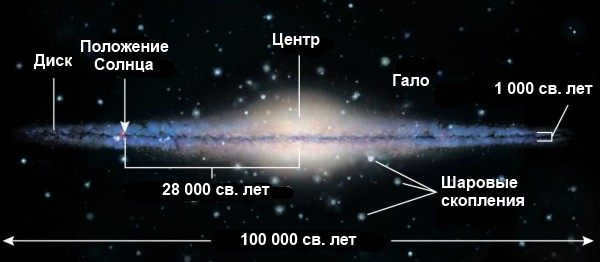
The location of our solar system within the Milky Way can be observed. We can see that the galaxy divides the sky into two halves, indicating our proximity to the galactic plane. The Milky Way has a dim appearance due to the presence of dust and gas, which conceal its disk. As a result, we are unable to see the central region and the opposite side.
It takes approximately 250 million years for our solar system to complete one orbit around the galaxy, which can be referred to as a “cosmic year.” During the previous orbit, dinosaurs roamed the Earth. What lies ahead for us? Will humanity face extinction or will we be succeeded by a new species?
In general, we reside in a vast and astonishing place. Fresh knowledge helps you adapt to the idea that the Universe is much larger than any assumptions. You now have an understanding of the location of Earth within the Milky Way. [5]
 [5]
[5]
The Milky Way (or Galactica, capitalized) represents a spiral galaxy with a central hub [1] that encompasses Earth, the solar system, and all stars visible to the naked eye [9] [10].
The Milky Way, along with the Andromeda galaxy (M31), the Triangle galaxy (M33), and over 40 smaller satellite galaxies, form the Local Group of Galaxies [11], which is itself part of the Virgo Supergroup [12].
Etymology
The term Milky Way is derived from the Latin phrase via lactea, meaning “milky way”. This Latin phrase itself is a translation of the Greek phrase ϰύϰλος γαλαξίας, which means “milky circle” [13]. The word Galaxy is derived from the ancient Greek word γαλαϰτιϰός, meaning “milky”, by analogy. According to an ancient Greek myth, Zeus wanted to make his son Heracles, who was born to a mortal woman, immortal. To achieve this, Zeus brought Heracles to his sleeping wife Hera so that he could drink her divine milk. However, when Hera woke up and realized what was happening, she pushed Heracles away, causing the milk to splash and form the Milky Way.
During the time of the Soviet astronomy school, our Galaxy was commonly referred to as the Milky Way system [14]. The term “Milky Way” [15] was specifically used to describe the visible stars that form the Milky Way as seen by observers.
Structure of our Galaxy
Our Galaxy has a diameter of approximately 30,000 parsecs (equivalent to about 100,000 light-years or 1 quintillion kilometers) and an estimated average thickness of roughly 1000 light-years. It is believed to contain a minimum of 200 billion stars (though modern estimates range from 200 to 400 billion). The majority of these stars are arranged in a flat disk shape. As of January 2009, the mass of our Galaxy is thought to be between 3-10^12 solar masses [5], or 6-10^42 kg. Interestingly, most of the Galaxy’s mass is not found in stars and interstellar gas, but rather in a non-luminous halo made up of dark matter.
The disk
In the 1980s, astronomers proposed the idea that the Milky Way is not just a regular spiral galaxy, but rather a spiral galaxy with a junction[16]. This hypothesis was later supported by the Lyman Spitzer Space Telescope in 2005, which revealed that the central junction of our galaxy is actually larger than what was previously believed [17].
According to scientists, the galactic disk, which extends in various directions near the galactic center, has an estimated diameter of approximately 100,000 light-years [18]. In comparison to the halo, the disk exhibits a noticeably faster rotation. The speed of rotation varies at different distances from the center. It rapidly increases from zero at the center to 200-240 km/s at a distance of 2 thousand light-years, then slightly decreases, increases again to approximately the same value, and then remains nearly constant. Studying the rotational characteristics of the disk has enabled us to estimate its mass, revealing that it is 150 billion times greater than M☉.
In the vicinity of the disk, there exists a concentration of youthful stars and star clusters, all of which have an age that does not surpass a few billion years. They collectively constitute what is known as the flat component. Within this group, a significant number of stars shine brightly and emit intense heat. Additionally, the gas within the Galaxy’s disk is predominantly concentrated near its plane. This distribution is not uniform and gives rise to a multitude of gas clouds, ranging from immense clouds with irregular structures that span several thousand light-years, to smaller clouds no larger than a parsec.
The heart
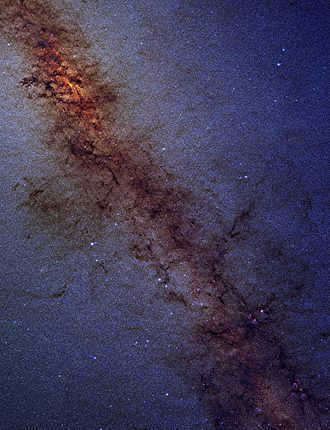
The central regions of the Galaxy exhibit a notable concentration of stars: in each cubic parsec near the core, there is a multitude of thousands of stars. The interstellar distances in this area are significantly smaller, measuring tens and hundreds of times less than those found near the Sun. Similar to other galaxies, the mass distribution in the Milky Way is such that the orbital velocity of most stars in this galaxy is not significantly influenced by their proximity to the core. As one moves further away from the core towards the outer periphery, the average orbital velocity of stars ranges from 210-240 km/s. This velocity distribution, unlike that observed in the solar system where different orbits possess distinct orbital velocities, serves as one of the prerequisites for the existence of dark matter.
The estimated length of the galactic jumper is approximately 27,000 light years[16]. This jumper traverses the galactic center at an inclination of 44 ± 10 degrees relative to the line connecting our Sun and the galactic center. It is primarily composed of red stars, which are considered to be highly ancient. Surrounding the junction is a ring known as the Five Kiloparsec Ring. This ring contains the majority of the Galaxy’s molecular hydrogen and serves as an active region for star formation within our Galaxy. If observed from the Andromeda Galaxy, the galactic junction of the Milky Way would appear as a luminous segment[25].
Sleeves: A Guide to Different Types of Arm Coverings
The Milky Way is classified as a spiral galaxy, meaning it has spiral arms located in the plane of the disk. The disk is surrounded by a spherical halo and a spherical corona. Our solar system is positioned approximately 8.5 thousand parsecs away from the center of the galaxy, near the Orion arm on the inner edge. However, due to our location, we are unable to visually observe the shape of the arms. Recent studies on molecular gas (CO) suggest that the Milky Way has two arms originating from the inner bar of the galaxy, with additional arms present in the inner region. These arms then transition into a four-arm structure, which can be observed in the outer regions of the galaxy through the neutral hydrogen line [26].
Hello
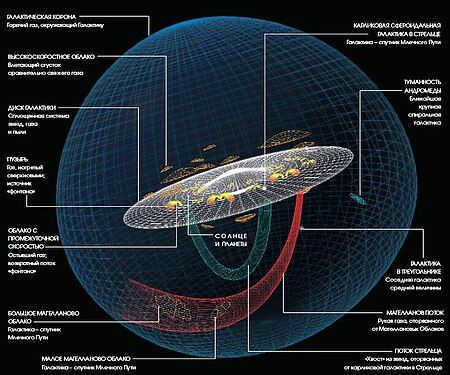
While the galactic disk contains gas and dust, creating an obstacle for visible light to pass through, the spheroidal element does not contain such components. Star formation is active in the disk (especially in the spiral arms, which are regions of higher density). In the halo, star formation has ceased. Scattered clusters are primarily located in the disk. The majority of our galaxy is believed to be composed of dark matter, forming a dark matter halo with a mass of approximately 600-3000 billion M☉. The dark matter halo is concentrated towards the center of the galaxy [29].
The stars and star clusters in the halo orbit around the galaxy’s center in highly elongated paths. Due to the somewhat random rotation of individual stars (i.e., neighboring stars can have velocities in any direction), the halo as a whole rotates at a very slow pace.
Exploring the Origins of the Galaxy
Various celestial entities come together to create diverse systems that revolve. Take, for instance, the Moon’s orbit around the Earth, and the satellites surrounding the colossal planets that constitute their own systems, teeming with celestial bodies. On a grander scale, the Earth and other planets revolve around the Sun. This prompts the question: could the Sun, too, be a constituent of an even more expansive system?
In the 18th century, the English astronomer William Herschel conducted the initial comprehensive investigation of this matter. Herschel meticulously tallied the quantity of stars in various celestial regions and made a remarkable discovery: a vast celestial circle, later known as the galactic equator. This circle effectively bisects the sky into two equal portions, with the highest concentration of stars occurring along its trajectory. Furthermore, the density of stars progressively increases as one approaches this celestial boundary. Remarkably, it was determined that the Milky Way itself resides precisely on this celestial circle. Herschel astutely conjectured that all observable stars collectively comprise an expansive star system that is compressed along the galactic equator.
In the beginning, it was believed that all objects in the universe were components of our Galaxy, although Kant proposed that some nebulae could be galaxies similar to the Milky Way. As early as 1920, discussions about the existence of extragalactic objects arose, such as the well-known Great Controversy between Harlow Shapley and Heber Curtis; Shapley argued for the uniqueness of our Galaxy. Kant’s hypothesis was finally confirmed only in the 1920s, when Edwin Hubble successfully measured the distance to certain spiral nebulae and demonstrated that, based on their distance, they could not be part of the Galaxy.
Position of the Sun in the Milky Way
Based on the most recent scientific calculations, it is estimated that the Sun is located approximately 26,000 ± 1,400 light years away from the center of the Milky Way galaxy. However, initial estimates suggested that our star would be situated around 35,000 light years from the galactic crossbar. This indicates that the Sun is positioned closer to the outer edge of the galactic disk rather than its center. Alongside other stars, the Sun orbits the center of the Milky Way at a velocity of 220-240 km/s, completing one revolution in approximately 200 million years. As a result, throughout its entire existence, the Earth has completed no more than 30 orbits around the center of the Milky Way galaxy.
Within the vicinity of the Sun, it is feasible to track the segments of two spiral arms, which are approximately 3 thousand light years away from us. These segments have been designated the Sagittarius arm and the Perseus arm based on the constellations in which they are observed. The Sun is situated in the middle of these spiral branches. However, there is another arm, known as the Orion arm, which is not clearly defined and passes through the constellation of Orion, relatively close to us according to galactic standards. The Orion arm is considered to be a subsidiary branch of one of the primary spiral arms of the Galaxy.
The velocity of the Sun’s rotation around the center of the Galaxy closely matches the velocity of the compression wave that creates the spiral arm. This situation is unusual for the Galaxy as a whole: the spiral arms rotate at a consistent speed, resembling spokes on a wheel, while the movement of stars follows a different pattern [31]. As a result, the majority of stars in the disk are either within the spiral arms or outside of them. The only location where the velocities of stars and spiral arms align is known as the corotational circle, and it is within this circle that the Sun is positioned.
This circumstance is of utmost importance for the Earth, as the spiral arms of the Galaxy are home to violent processes that give rise to intense radiation, which can be highly destructive to all forms of life. No atmosphere, no matter how robust, can shield against such radiation. Fortunately, our planet is situated in a relatively tranquil region of the Galaxy, and for hundreds of millions, if not billions, of years, it has remained unscathed by these cosmic cataclysms. It is perhaps this favorable positioning that has allowed life to emerge and persist on Earth.
The local area
As suggested by a Wikipedia contributor, this spot has the potential to become a unique and distinctive section.
You can contribute to the project by crafting this section.
Growth and the destiny of the Universe
Possible interactions between our Universe and other galaxies, such as the massive Andromeda Galaxy [32], remain uncertain due to the unknown lateral velocity of extragalactic entities.
Scenic Views

Related Links
Important Information
- ↑ 12Zasov & Postnov, 2006, p. 302
- ↑ 123Eric Christian; Safi-Harb Samar.How big is the Milky Way? Ask an Astrophysicist. NASA (December 1, 2005). Archived from the original source on July 4, 2012. (Checked October 9, 2012)
- ↑Thanu PadmanabhanAfter the first three minutes: the tale of our universe. – Cambridge University Press, 1998. – P. 87. – ISBN 0-521-62039-2
- ↑How Many Stars does the Milky Way Have?
- ↑ 12 Lenta.ru: "The Milky Way has doubled in weight", 06.01.2009.
- ↑Anna Frebel The Discovery of HE 1523-0901: A Metal-poor Star with Strongly Enhanced r-Process Elements and Detected Uranium. The Astrophysical Journal. – 2007. – Vol. 660. – P. L117. DOI:10.1086/518122arΧiv:astro-ph/0703414
- ↑ 12Nicolai Bissantz Gas Dynamics in the Milky Way: Determining the Second Pattern Speed and Large-scale Morphology. Monthly Notices of the Royal Astronomical Society. — 2003. — Vol. 340. — P. 949. — DOI:10.1046/j.1365-8711.2003.06358.xarΧiv:astro-ph/0212516
- ↑Kogut, A.; Lineweaver, C.; Smoot, G. F.; Bennett, C. L.; Banday, A.; Boggess, N. W.; Cheng, E. S.; de Amici, G.; Fixsen, D. J.; Hinshaw, G.; Jackson, P. D.; Janssen, M.; Keegstra, P.; Loewenstein, K.; Lubin, P.; Mather, J. C.; Tenorio, L.; Weiss, R.; Wilkinson, D. T.; Wright, E. L.Dipole Anisotropy in the COBE Differential Microwave Radiometers First-Year Sky Maps (English) // Astrophysical Journal. — 1993. — Vol. 419. — p. 1. — DOI:10.1086/173453
- ↑Zasov and Postnov, 2006, p. 290
- ↑Collins Elementary English Dictionary – Complete and Unabridged 1991-2003 – Milky Way. The American Heritage Science Dictionary. thefreedictionary.com (2005). (Checked October 8, 2012)
- ↑Drozdowski I.Local Group of Galaxies. Astronet (2000). Archived from the original source on October 26, 2012. (Checked October 18, 2012)
- ↑Drozdovsky I.Local Supergroup. Astronet (2001). Archived from the original source on October 26, 2012. (Checked October 18, 2012)
- ↑Fasmer M. Etymological dictionary of the Russian language / Edited by O. N. Trubachev. – M .: “Progress”, 1986. – VOL. II. – P. 632.
- ↑Big Soviet Encyclopedia on Yandex Dictionaries
- ↑Yandex dictionaries
- ↑ 12The form of Chumatsky Shlyakh is not typical (Russian)
- ↑August 16, 2005 – New Scientist article.
- ↑Chumatsky Shlyakh is our Galaxy (Russian).
- ↑V. D. Shabetnik Physical Education in Higher Education Institutions. 1998
- ↑ Blinnikov S. Discovery of our universe // Novy Mir, – № 11, November 2008, – C. 153-165
- ↑Astronomers have found a black hole in the center of the Milky Way
- ↑ 12"Scientists have discovered a second black hole in the center of our galaxy"
- ↑A group of black holes exists in our Galaxy
- ↑The supermassive black hole in the center of our Galaxy is rotating quickly
- ↑ [ April 23, 2006] – http://www.bu.edu/galacticring/new_introduction.htm (in Russian)
- ↑arxiv:0812.3491 The Milky Way spiral arm pattern
- ↑ 12↑http://www.seds.org/messier/xtra/data/mwgc.dat.txt
- ↑The radial velocity dispersion profile of the Galactic halo: Constraining the density profile of the dark halo of our galaxy, as described in the paper by Battaglia et al. in 2005, published in MNRAS, 364 (2005) 433
- ↑Exploring the depths of the Milky Way: An investigation into Galactic diving (Russian)
- ↑Rebels of the stars: Preserving life in our galaxy (Russian)
- ↑Examining the downfall of galactic empires on vremya.ru, in the article titled “The death of galactic empires”, dated August 8, 2007
References
- Zasov A.V., Postnov K.A. General Astrophysics – Fryazino: Vek 2, 2006. – 496 p. – ISBN 5-85099-169-7 (Verified on October 8, 2012)
- The book “The Milky Way”, ISBN 5-85099-156-5
Other Sources
- Galaxy. Suchkov L. A. Astronet (1984).
- GLIMPSE panorama of the Spitzer telescope
- Interactive panorama of our galaxy
- Photos of the Milky Way
- Milky Way visible in the night sky
- Detailed map of the Milky Way’s magnetic field
- Astronomy Picture of the Day (July 27, 2010). Verified on December 27, 2012.
In the early 1900s, astronomers held the belief that the Sun was positioned close to the center of a cosmic nebula, with a starless void known as “the great Pacific Ocean of space” stretching beyond it. However, it was through precise observations of star movements that American astronomer Harlow Shepley was able to accurately determine the actual center of our Galaxy in 1918. Surprisingly, it is situated behind a dark cloud located in the Sagittarius constellation.
When we capture images in the centimeter range, there appears to be a somewhat indistinct mass that spans several light years in front of us. These clouds of ionized gas enveloping the central region of the Galaxy have hindered astronomers from studying it, much like how atmospheric distortions impede our view of distant stars from Earth’s surface. “As we transition into the short-wave portion of the observation spectrum, the distortions that obscure the Galaxy’s center gradually fade away. We begin to perceive with greater clarity the cloud in which gas masses are swirling and converging towards the center, where a luminous spot emanates.”
Thanks to the improved capabilities of telescopes, we now have the ability to make more precise measurements regarding the size of this particular object. Initially, it appeared to be nothing more than a cloud emitting strong radio waves. However, since 1992, astronomers have been conducting studies on the area surrounding Sagittarius A* (also known as Sagittarius A* or Sgr A*) using infrared technology. The images captured (infrared radiation is capable of penetrating through cloud cover within a specific range) clearly display groups of stars orbiting in close proximity to Sgr A*. By analyzing their trajectory, we can calculate the tremendous force that is drawing them towards it. This force is so immense that even a cluster of neutron stars would not possess enough gravitational pull to generate it.
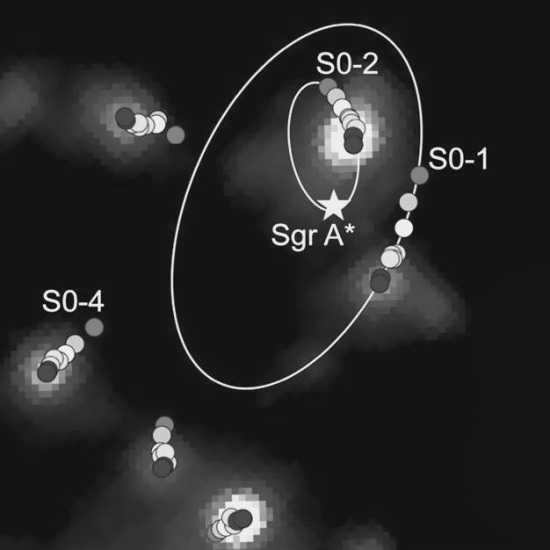

A picture depicting the star cluster known as Sgr A* situated in the heart of our galaxy.
Observations have revealed the existence of an immense amount of matter located in the central region of the Milky Way. The presence of a black hole in this area is the only plausible explanation for such a phenomenon. Initially, it was estimated to have a mass equivalent to about 2.7 million times that of our Sun. Further investigations using infrared and X-ray observations have demonstrated that this celestial object is rotating at an astonishingly high speed.
Subsequent meticulous examinations of the trajectories and velocities of neighboring stars have allowed astronomers to ascertain the presence of a black hole within a relatively small region with a diameter of approximately 12 million kilometers. The mass of this black hole is estimated to be around 4.3 million times greater than that of the Sun.
Therefore, it is now known that at a distance of 26 thousand light years from Earth, in the heart of our Galaxy, lies a colossal black hole known as Sagittarius A* – an insatiable force of stellar demise, consuming everything that dares to approach it. Within this confined region of space, an immense accumulation of matter exists, surpassing what would be needed for the creation of millions of stars. However, this black abyss of the galaxy was once filled with countless stars, each living out their brilliant existence before vanishing into this alternate realm. Initial observations of this section of the Milky Way have unveiled the inhospitable conditions that would prevail if our Sun were indeed situated at the core of the Galaxy. A place where one catastrophe follows another in rapid succession, where chaos reigns supreme, and where the demise of stars is as ordinary as the loss of soldiers on the battlefield. A place where cosmic radiation streams relentlessly, scorching the surfaces of any remaining planets. No, the term “uncomfortable” does not adequately capture the essence of this environment – “impossible” is a more fitting description!
Such research is raising new inquiries among scientists. It is astonishing, for instance, that there have been discoveries of youthful stars in the vicinity of a black hole. How did they end up here? It is highly improbable that they could have originated in their current location. The gravitational forces exerted by the black hole are so immense that these nascent stars would be instantaneously ripped apart. On the other hand, these stars are too young, meaning they haven’t had enough time to traverse to this section of the galaxy from a distant location. Therefore, they could not have been born here, nor could they have migrated here. So, where did they originate from?
Furthermore, astronomers determined in November 2004 that the primary black hole in our Galaxy is not the sole one. It appears that within the cluster of stars named GCIRS 13E, situated just three light-years away from Sgr A*, there could be an additional immense black hole, weighing approximately 1300 times more than the Sun. Scientists are still uncertain about its ultimate destiny. There is a possibility that it will eventually combine with the black hole at the center of the galaxy. Alternatively, it may attempt to break free from it. Another possibility is that they will continue to coexist on separate paths.
However, let’s return to the primary abyss of our galaxy. If it were to collapse, countless stars would be able to escape from this cosmic prison, but it continues to be replenished with new captives of Sagittarius A*. Prior to their demise, the ill-fated stars, as well as the gas and dust clouds, pass through a temporary “death chamber” as they accumulate in the accretion disk, situated around the black hole’s equator. This disk bears resemblance to the ring encircling the planet Saturn, although it is significantly hotter in comparison. Moreover, the dynamics of the processes occurring in the vicinity of the black hole are so intricate that some of the matter approaching it still manages to evade this trap, being forcefully ejected in the form of two formidable jets. Consequently, regardless of how densely stars gather in the proximity of the black hole, they rarely manage to slip through. In other galaxies, the jets of matter that are expelled from the central black hole extend throughout the entire galaxy.
The black hole Sgr A* is in a constant state of rotation, akin to its prey, executing its Todestanz – its “dance of death”. Typically, this “predator”, situated at the heart of our Galaxy, in its regal position, exhibits remarkably serene behavior – much like a lion or panther, resting after a triumphant hunt. Numerous scholars posit that in bygone eras, this black hole exhibited far more vigor than it presently displays.
It is possible that in the near future, the black hole will awaken and consume star after star, replenishing its power. This scenario resembles a jungle or savannah, where a hidden beast, like a “cosmic black panther,” occasionally pounces on a group of stray stars, strangling and devouring them. Afterwards, it retreats back into the branches, camouflaged by wisps of interstellar gas, making it difficult to detect the “predator.” German astronomer Andreas Eckart believes that such events may occur every ten thousand years, creating a truly unforgettable spectacle.
The gravitational force alone would crush the unfortunate stars, and their tortured bodies, resembling clouds of molten gas, would be drawn into the black hole like oyster shells. During this feeding frenzy, future generations of astronomers will observe the event using infrared, radio, and X-ray technologies. In these wavelengths, the agony of the victims will be captured in all its eerie and captivating colors, as if the god of death, Thanatos, is born amidst the darkness of the black hole, radiating with the highlights and shimmering lights of cosmic demise.
How fortunate we are not fated to reside in the heart of the Milky Way! In a celestial kingdom, much like in the annals of mankind: “If one should happen to be brought into the realms of the Empire, it is far more preferable to dwell in a distant province along the coast” (Joseph Brodsky) – where the exultant, pernicious radiance cannot penetrate, where the obscurity of majestic life does not stretch.
This passage serves as a prelude to the larger narrative.
Discover more
Exploring the Enigma of the Milky Way
Exploring the Enigma of the Milky Way In certain aspects, our understanding of far-off star systems surpasses that of our own galaxy, the Milky Way. Investigating its composition presents a greater challenge compared to other galaxies, as its internal structure must be examined, revealing many hidden elements.
The birth of the Milky Way
For many years, scientists believed that the Milky Way came into existence over a long period of time. However, in 1962, a new theory was put forward by Olin Eggen, Donald Linden-Bell, and Allan Sandage, known as the ELS model. This model suggested that the Milky Way was formed through a different process. Instead of gradually forming, the ELS model proposed that the Milky Way was created through a series of events. According to this hypothesis, the Milky Way was born in a relatively short span of time, rather than evolving slowly over millions of years.
IN THE HEART OF CARACAS
Located at the base of Mount Avila, the capital of Venezuela, Caracas, was initially settled by the Toromaycas Indian tribes. As European explorers arrived in the area, they frequently heard the natives refer to the capital as “Caracas”. This word became synonymous with the bustling city that we know today.
Another Eisenstein: Jugendstil in the Center
Yet another Eisenstein: Jugendstil in the heart of the city
After strolling down Smilsha Street to its very end, we leave the Old Lady behind and find ourselves facing Bastion Hill. From here, you can follow the City Canal, also known as Riga Canal, in various directions, effectively “marking” different paths through the city center – all densely developed and
What can be found on the ocean floor?
The seabed is far from being a flat surface. Similar to the land, it is filled with valleys, plains, mountains, and depressions. These oceanic valleys consist of solid rocks that are concealed beneath layers of sand, gravel, clay, and silt, which have accumulated over time from the remains of countless marine organisms.
Where Can Lukomorye Be Found?
If you’re curious about the whereabouts of Lukomorye, a quick search in the “Russian Language Dictionary” will tell you that it refers to an ancient term for a sea bay or inlet. However, the popular belief is that Lukomorye is situated in the Pskov region, within the confines of the Pushkin Reserve.
What is the geographical location of Italy?
Italy is situated on the Apennine Peninsula, which is often referred to as a “boot” due to its distinctive shape. This country boasts a rich history, which has given rise to remarkable cities such as Rome, known as the “open-air museum,” Florence, and the picturesque city built on water.
Where can you find Israel?
Israel is situated on the eastern coast of the Mediterranean Sea. Despite its small size, the country boasts lush valleys with tropical flora, towering arid mountains, and vast desolate stretches of rocky terrain.
The enigmatic wonders of the Milky Way
The enigmatic wonders of the Milky Way, this mesmerizing cosmic stream, radiating a faint ethereal glow and spanning across the expansive realm of the sky, have perpetually captivated individuals who, on clear evenings, divert their gaze from the earth and fixate upon the limitless expanse of the universe. In ancient times,
What methods do scientists use to determine the composition of the Earth’s core?
Scientists face a challenge when it comes to uncovering the mysteries of the Earth’s core, as they cannot directly access it with their instruments. However, they have devised alternative methods to explore its composition. One of these methods involves studying volcanic rocks.
What lies at the core of the Earth?
What lies at the core of the Earth? No scientist or specialized instrument has been able to reach the core of our planet. However, humanity has managed to unravel the secrets of what lies at the center of our planet. How? Initially, mankind started accumulating knowledge about the composition of the globe through studying volcanic and igneous rocks.
A Scottish Explorer in the Heart of Africa
David Livingstone, a renowned Scottish explorer, found himself in the heart of Africa. Hailing from a humble Scottish family, Livingstone grew up in poverty, even working in a weaving mill at the tender age of ten. However, against all odds, he managed to obtain an education and ultimately agreed to embark on a journey to South Africa.
At the forefront of global focus
Taking center stage in the global spotlight, a group of Polish climbers ascended at the opportune moment – in the midst of spring, amidst harsh winter conditions. Their ascent was accomplished in record time, while a German team managed to conquer the journey from base camp to summit in a mere 31 days, even venturing into the darkness of night.
Chapter 7. Is it necessary to be in the center of attention?
Chapter 7. Is it essential to be the focal point of attention? Regardless of the amount of love you receive from your significant other, regardless of how much attention you receive from colleagues, friends, or any other individual, it is always gratifying to receive signs of attention, admiration, and a willingness to go to great lengths for you repeatedly.

The galaxy where planet Earth is located is known as the Milky Way. It is the subject of great interest and extensive research.
Undoubtedly, the name itself is captivating and evokes a sense of artistry. Interestingly, its origin is akin to a fairy tale. In ancient times, space objects were often named after gods.
According to Greek mythology, Zeus once brought his son Heracles to his slumbering wife, Hera, in an attempt to feed him. However, Hera pushed the child away, causing her milk to spill into the sky and create a milky streak. And thus, the name of the galaxy was born.
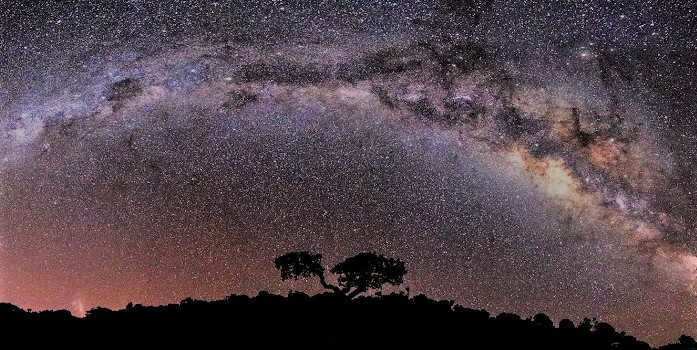
Unique Characteristics of Our Galaxy
The Milky Way, also known as the Galaxy, is classified as a spiral galaxy. However, it is not your typical spiral galaxy that can be found in abundance throughout the Universe. What sets it apart is the presence of a prominent feature known as a bar. This bar consists of the brightest stars and stretches across the galaxy, intersecting it right in the middle.
Unlike other galaxies, where the spiral arms originate from the center of the nucleus, in the Milky Way they originate from the ends of the bar.
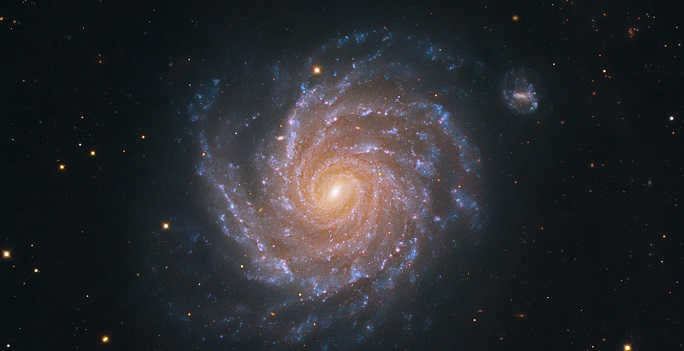
The different types of galaxies are classified based on certain characteristics. The Milky Way, for instance, falls under the category SBbc. This classification is given because our galaxy has a medium-sized bulge and its arms have a slightly twisted and wispy appearance.
Together with the Andromeda Galaxy and the Triangle Galaxy, our galaxy forms what is known as the Local Group. Additionally, it is part of the Virgo Local Supergroup.
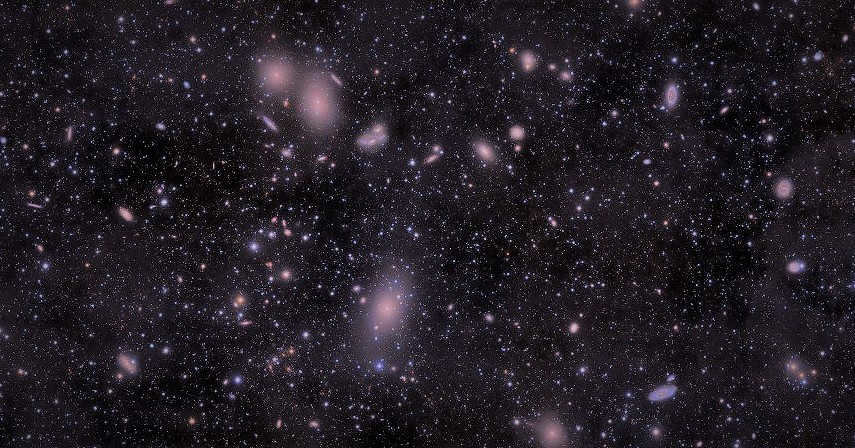

The Milky Way is known for its vast concentration of stars, dust, and gas, boasting approximately 400 billion stars. Its impressive diameter spans 100,000 light-years.
With a remarkable age of 13.2 billion years, the galaxy holds a captivating history. What makes it even more fascinating is that we can observe a portion of the Milky Way right from our own planet. In fact, everything surrounding us is part of this extraordinary galaxy.
The arrangement and makeup of our galaxy, the Milky Way
The central region of the Milky Way is composed of countless stars, with a black hole believed to be located at its core.
At the heart of this central region lies the balge, a luminous spheroidal component comprised of a densely-packed cluster of stars. The dimensions of the balge can range anywhere from hundreds of parsecs to a few kiloparsecs.
The bulge is approximately 27,000 light-years long and is known to intersect the galactic center. It has an inclination of around 44 degrees relative to the boundary between the Sun and the center.
The disk is composed of stars, constellations, gas, and dust. Its diameter is estimated to be 100 thousand light-years. However, the speed of motion within the disk varies depending on the distance from the core.
Gas clouds and young constellations surround the disk.
The composition of the Milky Way’s corona (halo) includes globular clusters, stars, and constellations. Additionally, it contains dwarf galaxies and significant quantities of hot gas. It is worth noting that the objects within the corona orbit around the nucleus in elongated paths, and their velocities can vary. As a result, the rotation of the corona is relatively slow.
The corona itself has a spherical shape and is nearly as ancient as the Milky Way.
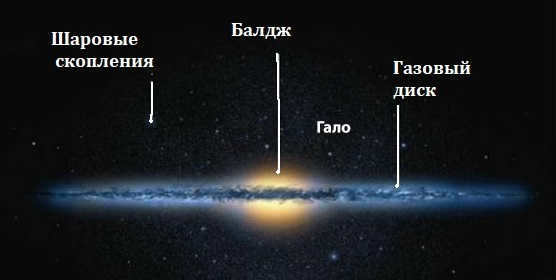
The gaseous ring is situated between the heart of the galaxy and its arms. It harbors a vast concentration of dust and gas. In fact, it is the site of active star formation.
The spiral arms are positioned within the plane of the disk. And this disk, in turn, resides within the corona. The Milky Way boasts five prominent arms:
The Sun lies within Orion’s arm. It occupies the inner portion of Orion. Additionally, it is closer to the disk region. It is approximately 27,000 light years away from the galactic core. The Sun moves at an impressive speed, about 250 kilometers per second.
Furthermore, it orbits around the galactic center. It takes approximately 240 million years to complete one revolution around the entire galaxy.

